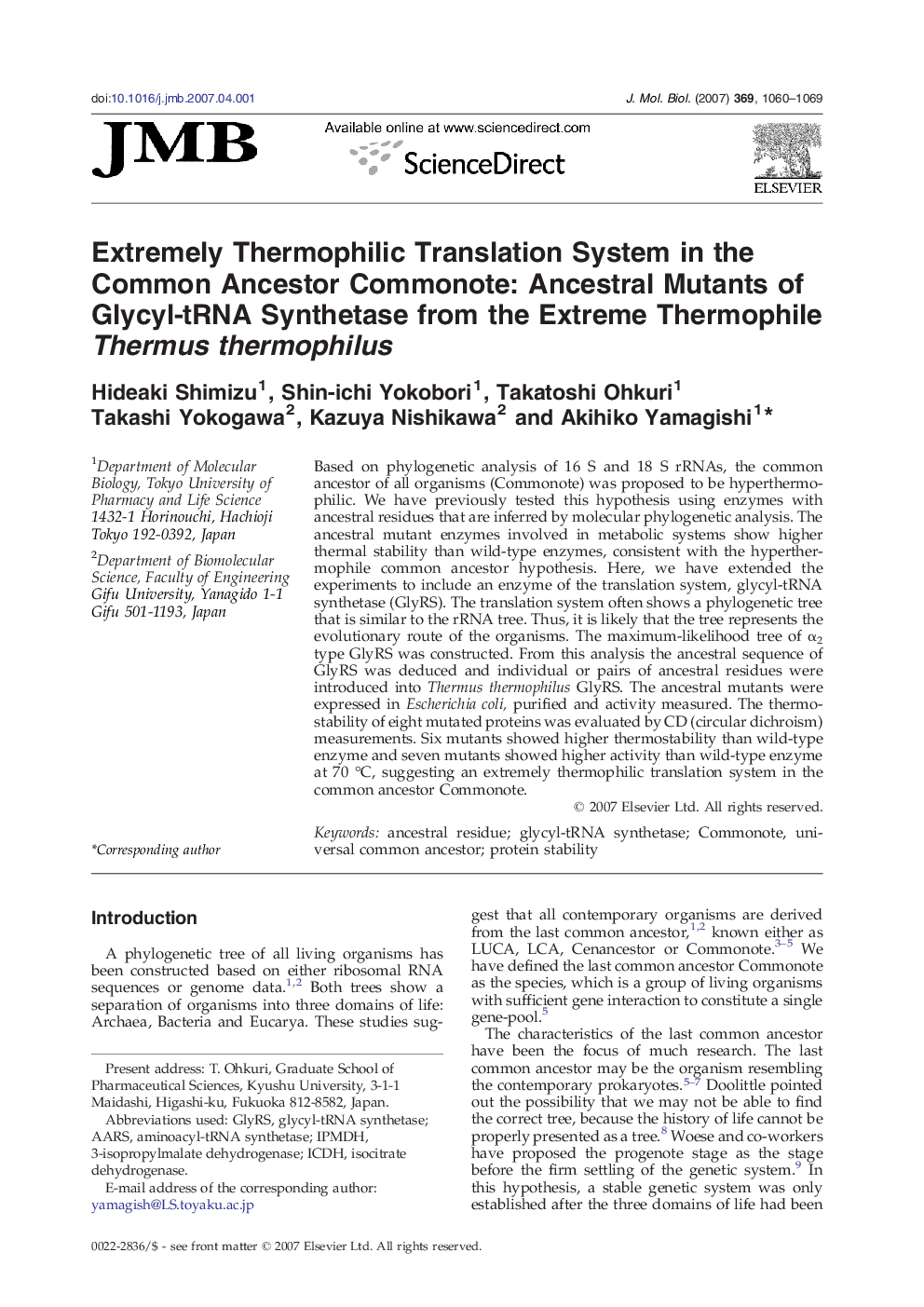| Article ID | Journal | Published Year | Pages | File Type |
|---|---|---|---|---|
| 2188449 | Journal of Molecular Biology | 2007 | 10 Pages |
Based on phylogenetic analysis of 16 S and 18 S rRNAs, the common ancestor of all organisms (Commonote) was proposed to be hyperthermophilic. We have previously tested this hypothesis using enzymes with ancestral residues that are inferred by molecular phylogenetic analysis. The ancestral mutant enzymes involved in metabolic systems show higher thermal stability than wild-type enzymes, consistent with the hyperthermophile common ancestor hypothesis. Here, we have extended the experiments to include an enzyme of the translation system, glycyl-tRNA synthetase (GlyRS). The translation system often shows a phylogenetic tree that is similar to the rRNA tree. Thus, it is likely that the tree represents the evolutionary route of the organisms. The maximum-likelihood tree of α2 type GlyRS was constructed. From this analysis the ancestral sequence of GlyRS was deduced and individual or pairs of ancestral residues were introduced into Thermus thermophilus GlyRS. The ancestral mutants were expressed in Escherichia coli, purified and activity measured. The thermostability of eight mutated proteins was evaluated by CD (circular dichroism) measurements. Six mutants showed higher thermostability than wild-type enzyme and seven mutants showed higher activity than wild-type enzyme at 70 °C, suggesting an extremely thermophilic translation system in the common ancestor Commonote.
